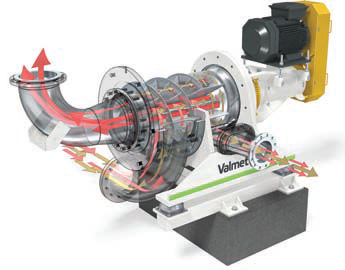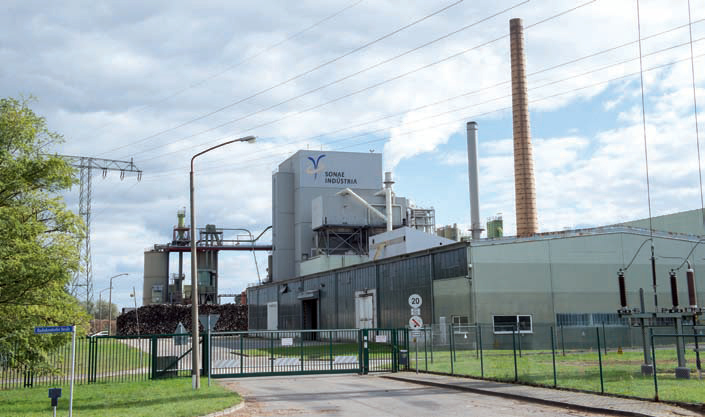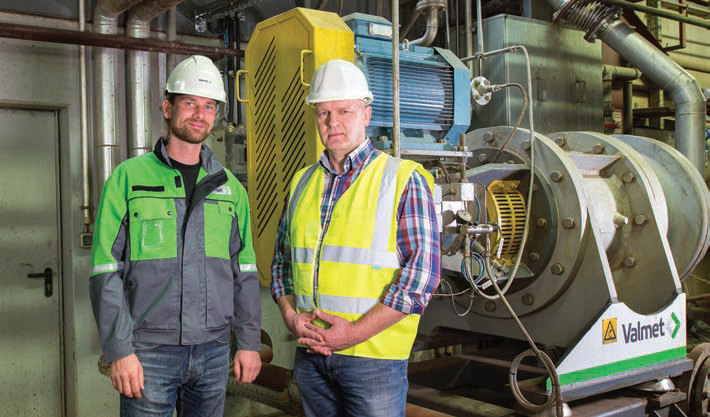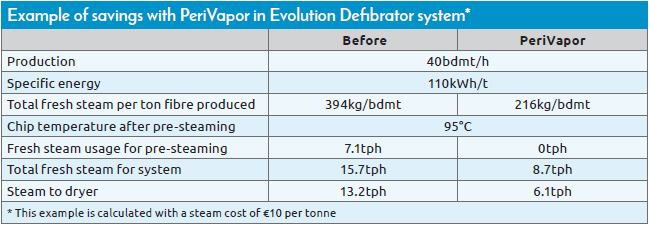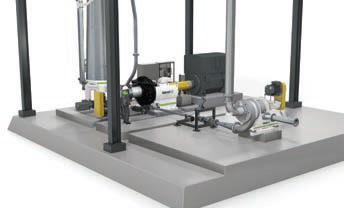Steaming ahead
16 March 2016Valmet, based in Sweden, has developed a new system to reduce the amount of steam required in the refining process for MDF. Called the PeriVapor, Valmet says this system has been successfully installed in a German MDF factory.
Valmet says that its newly-developed PeriVapor is evidence of its focus on designing new systems and solutions which help to minimise the operating costs of its clients during the manufacture of MDF panels.
The company says that with the PeriVapor it is possible to remove the need for using fresh steam in the pre-steaming bin. As a result of this, Valmet says it can reduce the total fresh steam consumption in the refining system by up to 50%.
In practice, says the Swedish machinery manufacturer, this means that it is possible to reduce the need for additional steam to be injected into the refining system. This in turn means that the MDF manufacturer can save the cost of producing the quantity of steam previously required.
The PeriVapor unit separates the steam from the fibre in order to allow recovered steam from the blowline to be used for pre-steaming, or indeed in other applications where low pressure steam is required.
The steam separator is designed to be installed between the refiner and the dryer, so that it can efficiently separate the steam from the fibre in the blowline.
The fibres are then fed into the dryer via a second blowline, where the resin is then added.
The separator works on the principle that the fibres will be separated from the steam if sufficient centrifugal force is imposed on those fibres. To accomplish this, the design incorporates a rotor with radial blades, designed so that the fibres and steam must accelerate to the same rotational speed as the rotor in order to reach the exhaust opening.
This will ensure maximum separation at various production levels, says Valmet, adding that the example set out in the table below results in estimated savings of 45% in steam reduction and €545,000 in cost savings.
Case study at BHW Beeskow
In January 2015, a Valmet PeriVapor was installed at BHW Beeskow Holzwerkstoffe GmbH in Germany. This mechanical steam separator is specially designed for positioning in the blow line after the Defibrator (refiner).
Valmet says it has extensive experience of mechanical steam separators used in the mechanical pulping process and that this played a key role during the construction of the new mechanical steam separator at BHW.
A large amount of steam is generated during defibration. This steam comes from the moisture present in the chips when they are broken down and the fibres exposed.
The mechanical steam separator can divert up to 50% of the steam generated from the fibre flow for recycling in the pre-steaming bin. This replaces a corresponding amount of fresh steam, giving savings in energy costs.
At BHW Beeskow, the PeriVapor recycles four to five tons (about six bar) of steam per hour. The mill has its own facility for producing steam for a turbine that is used to produce electricity. The reduced amount of steam that the pre-steaming bin requires means steam can now be passed to that turbine.
Today, about 1.4MW/h more electricity is produced in the steam turbine than is required. This electricity can be sold to the grid as 'green' electricity at a favourable price.
Valmet says the PeriVapor has not had any negative effects on emissions, quality of the final product, or resin consumption.
It is too early to be able to evaluate the positive effects on production, because the BHW mill is still in the running-in phase.
However, one benefit that can be immediately seen, says Valmet, is the temperature in the dryer, because it has been reduced by between five and eight degrees centigrade. If the dryer is a bottle-neck in the production line, this temperature drop gives the possibility of an increase in the volume of production, concludes the company.
"The machine has been in operation during the hot summer months when the need for steam/heat is significantly lower than during the winter. It will be interesting to continue optimising the process during the cold period to see how our PeriVapor performs then," said Imre Wittmaier, production manager at BHW's Beeskow mill.
